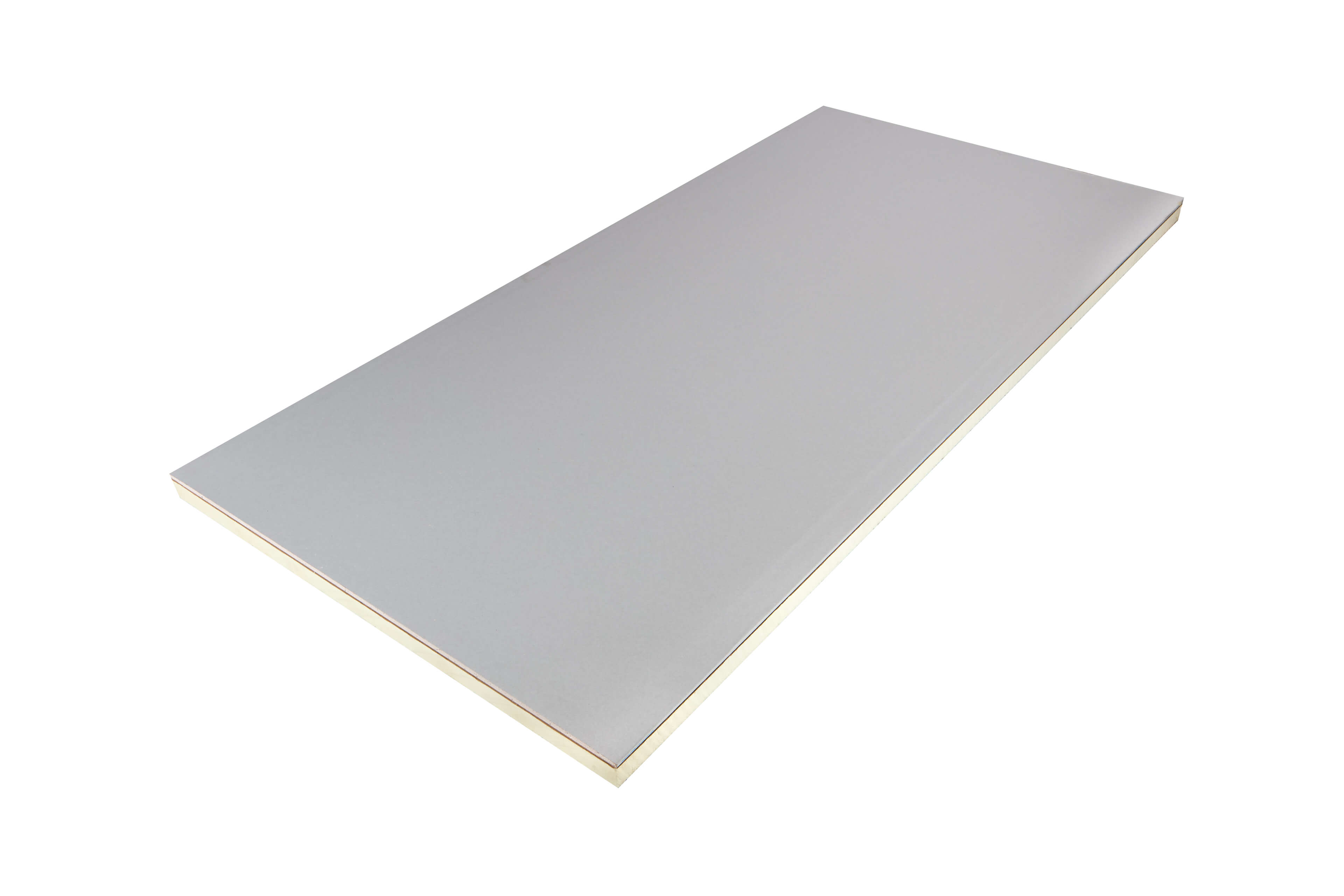Celotex Insulated Plasterboard PL4000
(4 Products)Celotex PL4000 offers a practical, time-saving solution for projects requiring both effective insulation and a smooth interior finish. By integrating high-performance PIR insulation with plasterboard, it eliminates the need for separate installations, simplifying the build process while ensuring thermal efficiency and structural integrity. This versatile product not only reduces material costs and labour requirements but also helps maximise internal space with its slim profile.
What Is Celotex Insulated Plasterboard?
Celotex PL4000 is a high-performance insulated plasterboard that integrates polyisocyanurate (PIR) insulation with a 12.5mm tapered-edge plasterboard, offering both insulation and dry lining in a single, efficient solution.
The PIR insulation delivers outstanding thermal efficiency, enhancing energy performance and indoor comfort, while the plasterboard provides a smooth, ready-to-decorate surface for painting or further finishing.
Perfect for new builds, refurbishments, and retrofit projects, Celotex PL4000 is designed for applications that demand both high-performance insulation and a flawless interior finish. By combining two essential building materials into one, it streamlines the construction process while reducing both labour time and material costs.
Key Features
- High Thermal Efficiency: Achieves excellent insulation values with minimal thickness.
- Two-in-One Solution: PIR insulation bonded to plasterboard, eliminating the need for separate insulation and drylining.
- Easy Installation: Can be mechanically fixed or dot-and-dabbed onto walls.
- Vapour Control Layer: Helps reduce condensation risks.
- Range of Thicknesses: Available in various sizes to meet different insulation requirements
Tapered Edge
PL4000's tapered edge provides a precise and seamless fit into various structural elements such as joists, frames, and rafters.
This precision-engineered design not only simplifies the installation process but also ensures a smooth, professional finish, reducing the need for excessive jointing or finishing work.
Versatile Fixing Methods
Depending on the application, PL4000 can be fitted using two widely used methods: dot and dab (drylining) or mechanical fixings.
- Dot and Dab (Drylining) - Fast & Effective
- One of the most common installation methods is dot and dab, also known as drylining. This technique involves applying evenly spaced adhesive ‘dots and dabs’ directly onto a concrete or blockwork wall. Dot and dab is favoured for its efficiency, ease of application, and ability to create a level surface for finishing.
- Mechanical Fixings - Secure & Durable
- For enhanced structural stability, mechanical fixings provide a robust alternative. This method involves securing the plasterboard with galvanised mechanical anchors featuring concave heads, ensuring a strong and lasting hold. Mechanical fixings are particularly beneficial in high-moisture environments or areas requiring additional durability. A variety of fixings are available to suit different substrates and load-bearing requirements.
PL400 Thicknesses
The total thickness of Celotex PL4000 varies based on the insulation layer, offering options for different levels of thermal efficiency:
- 25mm + 12.5mm plasterboard (Total: 37.5mm)
- 40mm + 12.5mm plasterboard (Total: 52.5mm)
- 50mm + 12.5mm plasterboard (Total: 62.5mm)
- 60mm + 12.5mm plasterboard (Total: 72.5mm)
Frequently Asked Celotex Insulated Plasterboard Questions
Is Celotex Insulated Plasterboard Flammable?
Celotex PL4000 thermal insulation boards have a Euroclass B fire rating, meaning they offer limited combustibility and contribute minimally to fire spread. They produce very low levels of smoke and do not generate flaming droplets, making them a safer choice for insulation in residential and commercial buildings.
Is Celotex Insulated Plasterboard Vapour-Resistant?
Provided all joints between the products are sealed in accordance with manufacturer instructions, Celotex PL4000 boards offer significant resistance to water vapour transmission.
How Should I Cut Celotex Insulated Plasterboard?
The integrated design of Celotex PL4000 makes it stronger and more durable than standard insulation boards, but also more challenging to cut.
While single-layer Celotex insulation can be trimmed with a utility knife, Celotex PL4000 requires a saw due to its plasterboard facing. An ordinary saw will work, but for a cleaner, more precise cut, we recommend using a fine-toothed saw.










